The N-terminal domain of Bcl-xL reversibly binds membranes in a pH-dependent manner
- PMID: 17128992
- PMCID: PMC1764622
- DOI: 10.1021/bi0616652
The N-terminal domain of Bcl-xL reversibly binds membranes in a pH-dependent manner
Abstract
Bcl-xL regulates apoptosis by maintaining the integrity of the mitochondrial outer membrane by adopting both soluble and membrane-associated forms. The membrane-associated conformation does not require a conserved, C-terminal transmembrane domain and appears to be inserted into the bilayer of synthetic membranes as assessed by membrane permeabilization and critical surface pressure measurements. Membrane association is reversible and is regulated by the cooperative binding of approximately two protons to the protein. Two acidic residues, Glu153 and Asp156, that lie in a conserved hairpin of Bcl-xLDeltaTM appear to be important in this process on the basis of a 16% increase in the level of membrane association of the double mutant E153Q/D156N. Contrary to that for the wild type, membrane permeabilization for the mutant is not correlated with membrane association. Monolayer surface pressure measurements suggest that this effect is primarily due to less membrane penetration. These results suggest that E153 and D156 are important for the Bcl-xLDeltaTM conformational change and that membrane binding can be distinct from membrane permeabilization. Taken together, these studies support a model in which Bcl-xL activity is controlled by reversible insertion of its N-terminal domain into the mitochondrial outer membrane. Future studies with Bcl-xL mutants such as E153Q/D156N should allow determination of the relative contributions of membrane binding, insertion, and permeabilization to the regulation of apoptosis.
Figures

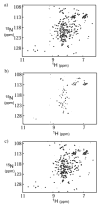
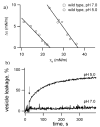
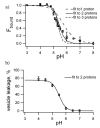
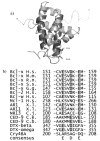

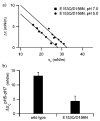

Similar articles
-
Evidence that membrane insertion of the cytosolic domain of Bcl-xL is governed by an electrostatic mechanism.J Mol Biol. 2006 Jun 16;359(4):1045-58. doi: 10.1016/j.jmb.2006.03.052. Epub 2006 Apr 6. J Mol Biol. 2006. PMID: 16650855 Free PMC article.
-
Lipid-modulation of membrane insertion and refolding of the apoptotic inhibitor Bcl-xL.Biochim Biophys Acta Proteins Proteom. 2019 Jul-Aug;1867(7-8):691-700. doi: 10.1016/j.bbapap.2019.04.006. Epub 2019 Apr 18. Biochim Biophys Acta Proteins Proteom. 2019. PMID: 31004798 Free PMC article.
-
Bh3 induced conformational changes in Bcl-Xl revealed by crystal structure and comparative analysis.Proteins. 2015 Jul;83(7):1262-72. doi: 10.1002/prot.24816. Epub 2015 May 23. Proteins. 2015. PMID: 25907960
-
Discoveries and controversies in BCL-2 protein-mediated apoptosis.FEBS J. 2016 Jul;283(14):2690-700. doi: 10.1111/febs.13527. Epub 2015 Oct 27. FEBS J. 2016. PMID: 26411300 Review.
-
A brewing understanding of the regulation of Bax function by Bcl-xL and Bcl-2.Mech Ageing Dev. 2017 Jan;161(Pt B):201-210. doi: 10.1016/j.mad.2016.04.007. Epub 2016 Apr 23. Mech Ageing Dev. 2017. PMID: 27112371 Review.
Cited by
-
Membrane promotes tBID interaction with BCL(XL).Nat Struct Mol Biol. 2009 Nov;16(11):1178-85. doi: 10.1038/nsmb.1671. Epub 2009 Oct 11. Nat Struct Mol Biol. 2009. PMID: 19820711
-
Structural dynamics of soluble chloride intracellular channel protein CLIC1 examined by amide hydrogen-deuterium exchange mass spectrometry.Biochemistry. 2009 Sep 8;48(35):8413-21. doi: 10.1021/bi9010607. Biochemistry. 2009. PMID: 19650640 Free PMC article.
-
Protein oligomerization mediated by the transmembrane carboxyl terminal domain of Bcl-XL.FEBS Lett. 2011 Oct 3;585(19):2935-42. doi: 10.1016/j.febslet.2011.08.012. Epub 2011 Aug 16. FEBS Lett. 2011. PMID: 21856303 Free PMC article.
-
The C. elegans B-cell lymphoma 2 (Bcl-2) homolog cell death abnormal 9 (CED-9) associates with and remodels LIPID membranes.Protein Sci. 2011 Jan;20(1):62-74. doi: 10.1002/pro.536. Protein Sci. 2011. PMID: 21031486 Free PMC article.
-
The N-terminal helix of Bcl-xL targets mitochondria.Mitochondrion. 2013 Mar;13(2):119-24. doi: 10.1016/j.mito.2013.01.004. Epub 2013 Jan 16. Mitochondrion. 2013. PMID: 23333404 Free PMC article.
References
-
- Chao DT, Korsmeyer SJ. BCL-2 Family: Regulators of Cell Death. Annu Rev Immunol. 1998;16:395–419. - PubMed
-
- Gross A. BCL-2 Proteins: Regulators of the Mitochondrial Apoptotic Program. IUBMB Life. 2001;52:231–6. - PubMed
-
- Harris MH, Thompson CB. The Role of the Bcl-2 Family in the Regulation of Outer Mitochondrial Membrane Permeability. Cell Death Differ. 2000;7:1182–91. - PubMed
-
- Kuwana T, Newmeyer DD. Bcl-2-Family Proteins and the Role of Mitochondria in Apoptosis. Curr Opin Cell Biol. 2003;15:691–9. - PubMed
-
- Schendel SL, Montal M, Reed JC. Bcl-2 Family Proteins as Ion Channels. Cell Death Differ. 1998;5:372–80. - PubMed
Publication types
MeSH terms
Substances
Grants and funding
LinkOut - more resources
Full Text Sources
Research Materials

